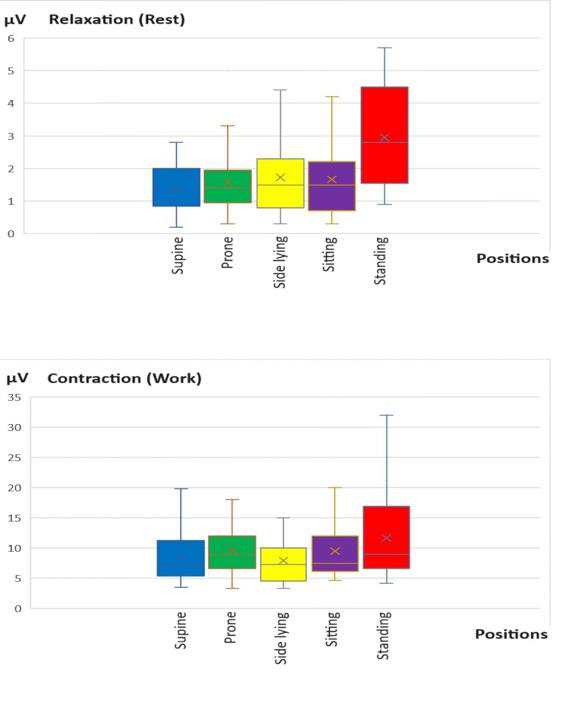PELVIC FLOOR MUSCLE FUNCTION IN 5 DIFFERENT POSITIONS IN CHILDREN
- Original Article
- Published on October 30 2024
 Canan Seyhan
Canan Seyhan
 Aslı Öztürk
Aslı Öztürk
 Rabia Aşık
Rabia Aşık
 Hasan Cem Irkılata
Hasan Cem Irkılata
 Murat Dayanç
Murat Dayanç

Purpose: There is little information in the literature regarding the functional activity of the pelvic floor muscles (PFM) in children in both physiological and pathological conditions. In this study, we aimed to investigate the resting and functional bioelectrical activities of PFM in 5 different positions (supine, prone, sitting, side lying, standing).
Methods: Twenty-five children with lower urinary tract symptoms (LUTS) were included in the study. Pelvic floor muscle activity (PFMA) was measured using surface electrodes in the postvoid period, which is the resting phase of the pelvic floor muscles. During the measurement, 5 seconds of contraction and 5 seconds of relaxation were performed, and the average values of the 50-second period were recorded.
Results: The best relaxation was observed in the supine position and was 1.43 ± 0.80 mV. The weakest relaxation was observed in the standing position and was statistically significantly inadequate in supine, prone, side lying and sitting positions (p=0.001; 0.001; 0.001; 0.001 respectively). Contraction was best achieved in the standing position, but a statistically significant difference was found in the supine and sitting position (p=0.009; 0.006 respectively). The weakest contraction was in the sitting position.
Discussion: PFM relaxation in children is best achieved in the supine position and may be important in the treatment of dysfunctional voiding children. We think that the weakest relaxation and strongest contraction in the standing position is due to the effect of gravity.